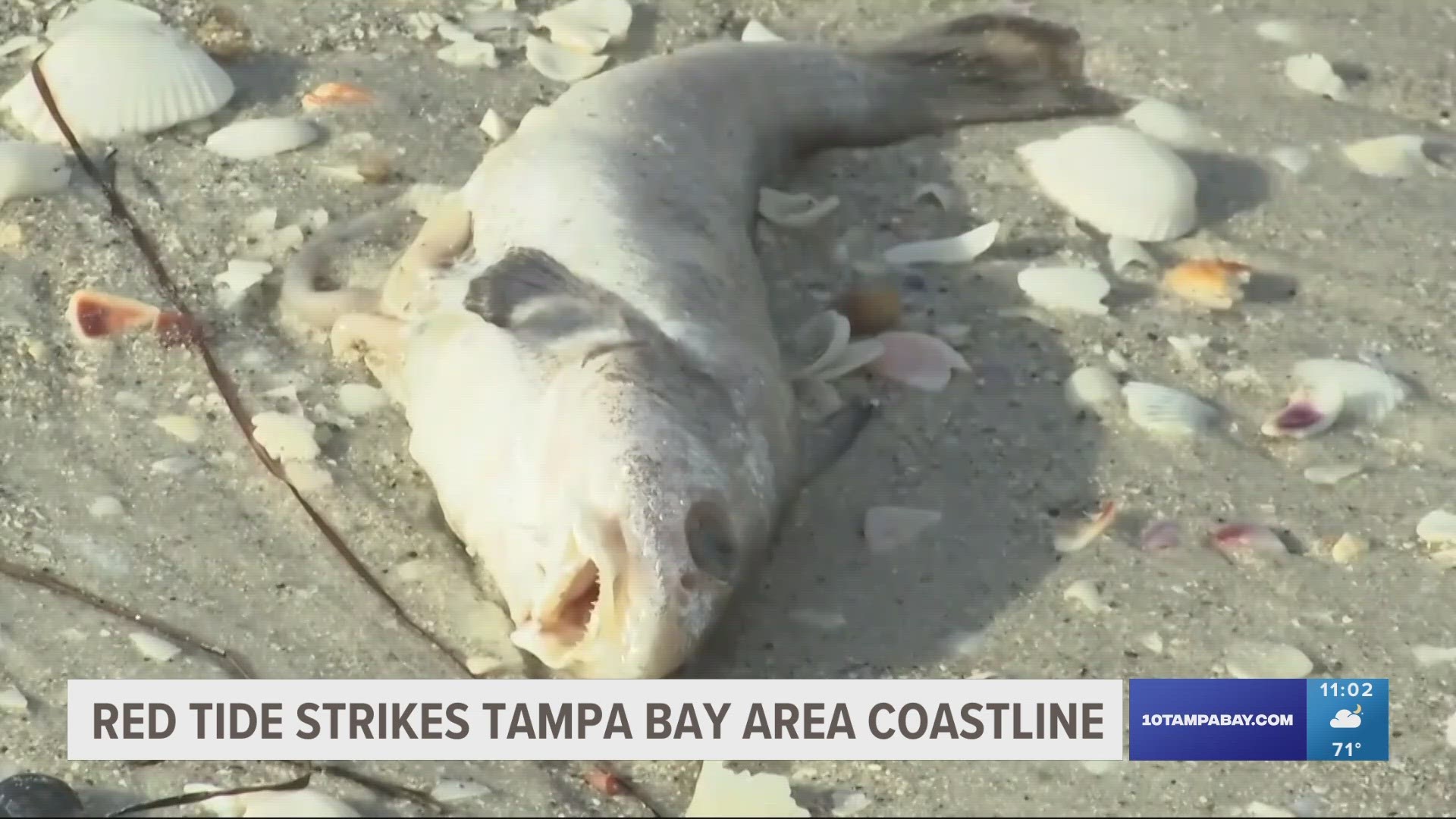ST. PETERSBURG, Fla. — Medium and high levels of red tide are plaguing local beaches to the north and south of Tampa Bay.
The blooms are impacting people visiting and living along our local beaches.
Most of the vacationers 10 Tampa Bay spoke with on Friday were caught off guard by the red tide. Some said it will make them reconsider future travels to the area.
"For us, it's going to be a deterrent," Patty Grennon, a vacationer from Maine, said.
Grennon and her family had been considering buying a place in the area, but red tide has changed their perspective.
"I'll be honest, for me, the red tide has thrown a real wedge in my decision-making," Grennon said.
While she said the white sand beaches and friendly locals make it an incredibly desirable area, their week of vacation has unfortunately been marked by miles of dead fish on the beach and air that's difficult to breathe.
"We haven’t been able to run, there’s been lots of coughing. It’s something we’ve never experienced before," Grennon said.
Visitors arriving in Clearwater Beach on Friday said the high level of red tide is on their radar.
Joe Clasby, a vacationer from Massachusetts said, "I have heard of the red bloom, the red algae causing skin irritation and such."
Meanwhile, in the city of Sarasota, contractors are on notice to start cleaning up the fish kills. Until then, Sarasota County health leaders are urging caution.
"The department of health recommends that nobody touch the dead sea life, just leave it alone to be safe," Sarasota Environmental Health Director Tom Higginbotham said.
Scientists have been able to track red tide with increased accuracy in recent years. USF Professor Emeritus and ocean physicist Robert Weisberg predicted this particular surge.
"We're never without red tide cells," Weisberg said. "They're always here, but the question is, are they in high enough concentration to dominate the plant species and therefore become a real nuisance?"
Marine scientists are now using automated gliders to track red tide deep in the gulf. Right now, Weisberg said they're detecting chlorophyll, which could signal more algae on its way.
"Chlorophyll is indicative of plant life and we don't know exactly what those plants are," Weisberg said. "We're kind of assuming right now that it is indicative of red tide organisms."
Fortunately, there's a lot to do on spring break in Tampa Bay beyond visiting the beaches. Florida State rangers say they're already seeing an uptick of people visiting the state parks to avoid red tide.

